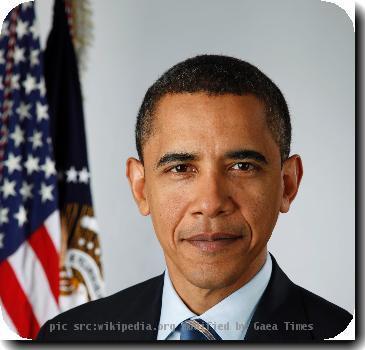A look at when health care overhaul changes go into effect
By Ricardo Alonso-zaldivar, APMonday, March 22, 2010
Health overhaul: Immediate change, long term steps
WASHINGTON — When President Lyndon Johnson signed the Medicare law in 1965, seniors got their health insurance cards less than a year later. President Barack Obama held his signing ceremony for his health care overhaul on Tuesday, but the major expansion of coverage for uninsured workers and their families won’t come until 2014 — after the next presidential election.
Parts of the plan won’t be fully phased in for a decade, but ultimately 94 percent of eligible Americans would have coverage.
Here’s a timeline of some changes:
THIS YEAR
— Sets up a high-risk health insurance pool to provide affordable coverage for uninsured people with medical problems.
— Starting six months after enactment, requires all health insurance plans to maintain dependent coverage for children until they turn 26.
— For children with medical problems, prohibits insurers from writing a policy that excludes payment for the particular condition. Insurers in the individual market could still deny new coverage to children in poor health.
— Bars insurance companies from putting lifetime dollar limits on coverage, and canceling policies except for fraud.
— Provides tax credits to help small businesses with up to 25 employees get and keep coverage for their employees.
— Begins narrowing the Medicare prescription coverage gap by providing a $250 rebate to seniors in the gap, which starts this year once they have spent $2,830. It would be fully closed by 2020.
— Reduces projected Medicare payments to hospitals, home health agencies, nursing homes, hospices and other providers.
— Imposes 10 percent sales tax on indoor tanning.
2011
— Creates a voluntary long-term care insurance program to provide a modest cash benefit helping disabled people stay in their homes, or cover nursing home costs. Benefits can begin five years after people start paying a fee for the coverage.
— Provides Medicare recipients in the prescription coverage gap with a 50 percent discount on brand name drugs; begins phasing in additional drug discounts to close the gap by 2020.
— Provides 10 percent Medicare bonus to primary care doctors and general surgeons practicing in underserved areas, such as inner cities and rural communities; improves preventive coverage.
— Freezes payments to Medicare Advantage plans, the first step in reducing payments to the private insurers who serve about one-fourth of seniors. The reductions would be phased in over three to seven years.
— Boosts funding for community health centers, which provide basic care for many low-income and uninsured people.
— Requires employers to report the value of health care benefits on employees’ W-2 tax statements.
— Imposes $2.3 billion annual fee on drugmakers, increasing over time.
2012
— Sets up program to create nonprofit insurance co-ops that would compete with commercial insurers.
— Initiates Medicare payment reforms by encouraging hospitals and doctors to band together in quality-driven “accountable care organizations” along the lines of the Mayo Clinic. Sets up a pilot program to test more efficient ways of paying hospitals, doctors, nursing homes and other providers who care for Medicare patients from admission through discharge. Successful experiments would be widely adopted.
— Penalizes hospitals with high rates of preventable re-admissions by reducing Medicare payments.
2013
— Standardizes insurance company paperwork, first in a series of steps to reduce administrative costs.
— Limits medical expense contributions to tax-sheltered flexible spending accounts (FSAs) to $2,500 a year, indexed for inflation. Raises threshold for claiming itemized tax deduction for medical expenses from 7.5 percent of income to 10 percent. People over 65 can still deduct medical expenses above 7.5 percent of income through 2016.
— Increases Medicare payroll tax on couples making more than $250,000 and individuals making more than $200,000. The tax rate on wages above those thresholds would rise to 2.35 percent from the current 1.45 percent. Also adds a new tax of 3.8 percent on income from investments.
— Imposes a 2.3 percent sales tax on medical devices. Eyeglasses, contact lenses, hearing aids and many everyday items bought at the drug store are exempt.
2014
— Prohibits insurers from denying coverage to people with medical problems, or refusing to renew their policy. Health plans cannot limit coverage based on pre-existing conditions, or charge higher rates to those in poor health. Premiums can only vary by age (no more than 3-to-1), place of residence, family size and tobacco use.
— Coverage expansion goes into high gear as states create new health insurance exchanges — supermarkets for individuals and small businesses to buy coverage. People who already have employer coverage won’t see any changes.
— Provides income-based tax credits for most consumers in the exchanges, substantially reducing costs for many. Sliding scale credits phase out completely for households above four times the federal poverty level, about $88,000 for a family of four.
— Medicaid expanded to cover low-income people up to 133 percent of the federal poverty line, about $29,300 for a family of four. Low-income childless adults covered for the first time.
— Requires citizens and legal residents to have health insurance, except in cases of financial hardship, or pay a fine to the IRS. Penalty starts at $95 per person in 2014, rising to $695 in 2016. Family penalty capped at $2,250. Penalties indexed for inflation after 2016.
— Penalizes employers with more than 50 workers if any of their workers get coverage through the exchange and receive a tax credit. The penalty is $2,000 times the total number of workers employed at the company. However, employers get to deduct the first 30 workers.
2018
— Imposes a tax on employer-sponsored health insurance worth more than $10,200 for individual coverage, $27,500 for a family plan. The tax is 40 percent of the value of the plan above the thresholds, indexed for inflation.
2020
— Doughnut hole coverage gap in Medicare prescription benefit is phased out. Seniors continue to pay the standard 25 percent of their drug costs until they reach the threshold for Medicare catastrophic coverage, when their copayments drop to 5 percent.
____
Sources: House Energy and Commerce Committee; Kaiser Family Foundation.
Tags: Access To Health Care, Aging And Disability Services, Barack Obama, Careers, Child And Teen Health, Government Programs, Government-funded Health Insurance, Health Care Costs, Health Care Industry, Health Care Reform, Health Issues, Irs, North America, Nursing Homes, Personal Finance, Personal Insurance, Personal Spending, Political Issues, Prices, Salary And Benefits, Seniors, Seniors' Health, United States, Washington








